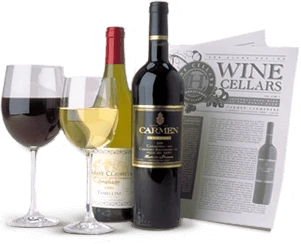By selecting six of the appellation’s 13 legal red varieties and plots known for delivering freshness, the team at Château de Nalys has imbued the superb 2016 Saintes Pierres de Nalys Châteauneuf-du-Pape (93 Points – Wine Enthusiast; 92 Points – Wine Advocate) with a cornucopia of hedonistic scents and flavors that one can fully enjoy immediately as well as a decade from now. Raspberry, black cherry, and plum flavors grace the nose and palate. Infused with subtle hints of aromatic wood and a cache of exotic spices to complement its fruit, this supple, elegant, yet beautifully structured Châteauneuf-du-Pape covers all bases, before finishing with great energy and verve. For optimal enjoyment we suggest affording the delicious 2016 Saintes Pierres de Nalys Châteauneuf-du-Pape 15-20 minutes of aeration before serving at cool room temperature (58°-62° F). Enjoy!
Châteauneuf-du-Pape is one of the most food friendly of all red wines, and the fresh, sensual 2016 Saintes Pierres de Nalys Châteauneuf-du-Pape is especially suited to a wide variety of foods. In its hometown and throughout the Southern Rhône, lamb in nearly any form constitutes the accompaniment of choice. However, the hedonistic personality-filled 2016 Saintes Pierres de Nalys is much more than a one dish wine. This beautifully wrought wine pairs nicely with red and white meats, game, stews, and nearly everything rich in garlic, tomatoes, olive oil and wild herbs. Eggplant, grilled or in hearty ratatouille, makes another fine accompaniment. Lobster ravioli, tortellini with fresh peas and prosciutto, and a four-cheese Provençal pizza provide additional tasty companions to Saintes Pierres de Nalys 2016 Châteauneuf-du-Pape. Bon Appétit!
Saintes Pierres de Nalys, whose name means “holy stones,” is grown and produced at the great Château de Nalys estate, which is now owned by the Guigal family. Saintes Pierres de Nalys is a special cuvée of Châteauneuf-du-Pape made entirely from estate, hand harvested, organically grown grapes from vines that average more than 45 years of age. Saintes Pierres de Nalys’s cuvée is an equal composition of three of Châteauneuf-du-Pape’s most renowned lieux-dits (registered single vineyards): La Crau, Nalys, and Bois Senechal. Differing varietal and plot selections, fermentation, and aging result in a wine equally impressive as Château de Nalys itself, but Saintes Pierres de Nalys is more vibrant and readily accessible in its youth.
Châteauneuf-du-Pape is the Rhône Valley’s most important appellation. Located in Provence, astride the swift moving Rhône River, this sun-drenched locale is blessed with a dry Mediterranean climate that is nearly ideal for the cultivation of vines and the production of wine. Châteauneuf-du-Pape possesses some of the oldest vines in France; the average age in excess of 40 years, by far the oldest of any major appellation in France. And many of those vines are 80-100 years of age. In addition, the entire production of this great wine is hand harvested. Moreover, we have not yet mentioned the region’s fabulous terroir – large flat stones known as galets roulés that are mingled with plenty of decomposed gravel. The remnants of Alpine glaciers that once covered southern France, Châteauneuf-du-Pape’s glacial till provides excellent drainage and imparts subtle nuances of flavor to the appellation’s outstanding wines, which can be both red and white and contain up to thirteen legal grape varieties, including Grenache, Syrah, Mourvèdre, Cinsault, Muscardin, Counoise, Clairette, Bourboulenc, Picpoul, Roussanne, Terret Noir, Picardan, and Vaccarese. A case can be made that there are actually fourteen legal grape varieties in Châteauneuf-du-Pape, as Grenache can be either a red or white grape.
Châteauneuf-du-Pape, meaning the pope’s new castle, derives its name from the sprawling edifice that the Roman popes built as a summer palace during the Babylonian Captivity. Forced to flee the political tumult of Rome from 1305-1378, Pope Clement V, a Frenchman, and his successor John XXII, left indelible marks on the history of wine by planting vines around their château and producing some of the medieval world’s most noteworthy wines. Later, during the 1920s, Châteauneuf-du-Pape would once again play a significant role in the history of wine by voluntarily adopting a set of controls and guidelines put forth by Baron Le Roy of Château Fortia. This action became the model for the entire French system of Appellation Control and nearly all other subsequent attempts worldwide to guarantee the authenticity of wine and improve the wine of individual geographic locales.

Enjoy Limited Production Estate
Bottled Wines
Discover limited production estate bottled wines such as Vergenoegd's internationally
acclaimed 2005 Cabernet Sauvignon, imported exclusively for our members.

